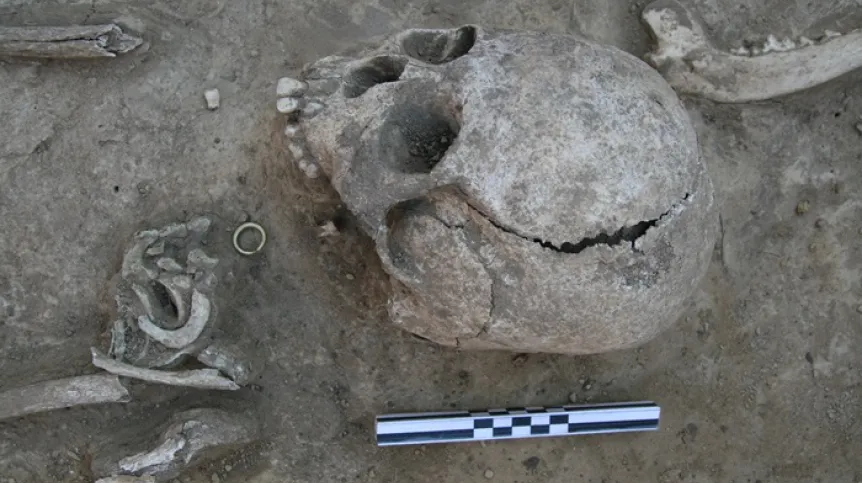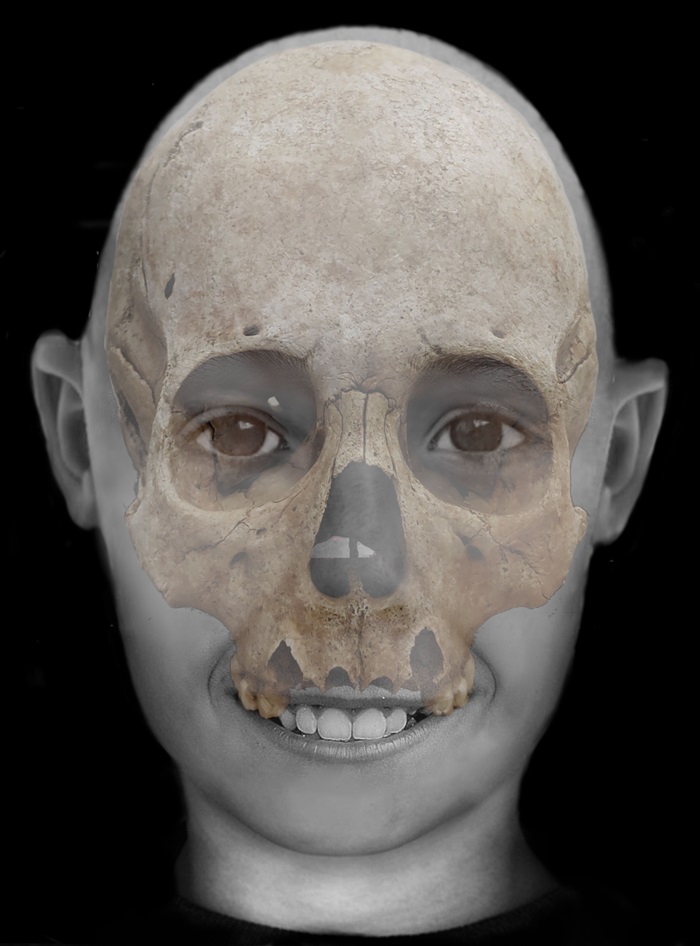
Polish archaeologists have discovered the grave of two children from the Migration Period in Czulice near Kraków. The discovery provides valuable information about the relations between the Huns and the local population in the 5th century CE.
Detailed results of the examination of the grave, in which, in addition to the skeletons of children, researchers found the remains of a dog, a cat and a crow, were described in the Journal of Archeological Science Reports.
Dr. Anita Szczepanek from the Institute of Archaeology and Ethnology of the Polish Academy of Sciences told PAP that the grave was special not only because it was the first such grave with children discovered in Poland (similar graves had already been found in Croatia and Germany), but also because children were ethnically different.
'The study of this grave is a kind of bioarchaeological investigation. We are trying to reconstruct what happened. We have two children aged 8-9, i.e. peers. The Hun - a boy with a deformed skull - is positioned anatomically. Equipped with a gold earring, an iron knife, silver belt buckles and a clay pot. We call such items +equipment for the afterlife+', Dr. Szczepanek said.
She added that 'the second boy is European, lies non-anatomically and was placed on his stomach - which raises a number of questions. It is clearly visible that after some time his head was moved to the area of the legs. Someone wanted both of their heads to face the same direction. We know that this shift could not have been made by a burrowing animal'.
The researcher admitted that the sight of such a grave stimulated the imagination of scientists who did not stop at simple dating, but wanted to learn as much as possible about the people buried there and the circumstances in which they were buried.
'Some of the teeth of this boy - the European - remained in the place where the head was originally positioned. His bones are also exceptionally smooth, which suggests that they have been subjected to heat treatment, e.g. cooking. Considering the different customs at that time, this is not surprising. But maybe they also wanted to protect the remains from decomposition?' Szczepanek said.
It is also worth noting that the grave dates back to 395-418 CE, and during that time corpses were burned in the lands of today's Poland. This violation of cultural custom leads researchers to believe that the European could have been sacrificed.
'We also cannot rule out that it was a coincidence or even necessity that caused this boy to be buried in this grave. Maybe he also held some higher function in the hierarchy of his community, for example he was the son of a local chief', she added.

Thanks to computed tomography and 3D reconstruction, researchers managed to determine an exceptionally large number of details about the Hun.
'The Hun has a deformed skull. This deformation was not neutral to the boy's health. We know that the child had a problem with increased intracranial pressure. We also noticed bone changes in the tops of the eye sockets, indicating childhood diseases. From a medical point of view, he was a weak boy', Szczepanek said.
At the same time, analysis of the bones of both children showed that they ate well. Their diet included a lot of animal protein.
'The boys were being prepared for a role in society. We do not know what caused the skull deformation. It may have been a sign of belonging to the elite. So it could have been a certain beauty standard achieved by artificial deformation. For example, by putting on leather headbands. There are no changes on the bones that would indicate frequent activities, such as archery, because the boys are too young. But we know from various accounts that little boys learned to shoot with a bow very early', Szczepanek explained.
The researcher admitted that there could be several scenarios for burying the boys in one place.
'There is a message behind it that we want to decipher. How these prehistoric communities lived, how they interacted with each other', she said.
Scientists do not know how strong the relations were between the Hun and European communities in the lands of today's Poland in the 5th century. They say that the Huns initiated a process of strong changes and population movements that led to the fall of the Roman Empire - 'they initiated an ethnic cauldron'.
'What do we know about the Huns? The first associations concern invasion and cruelty. The Hun is a monster. This, of course, comes from ancient records, where the terrifying appearance of the Huns was emphasised. We are now wondering what it looked like in the lands of today's Poland. Perhaps the Huns entered our community quite gently, because these lands were not part of the Roman Empire. Nomadic peoples either destroy everything and approach the area they enter in a predatory manner, or they start to think about cooperation with the local community. That included looking for a partner from among the conquered people', Szczepanek said.
Scientists collected and sequenced genes from the skeletons of the deceased and compared them with available genetic material. The genes have been deposited in the genetic database and will be compared with subsequent materials obtained from other graves in Europe.
Microbiological analysis of the dog's remains is currently underway. 'We are interested in zoonoses of that period. We want to find out whether these animals were carriers of any pathogens that were then transferred to humans', Szczepanek said. (PAP)
PAP - Science in Poland, Urszula Kaczorowska
uka/ bar/ amac/ kap/
tr. RL













